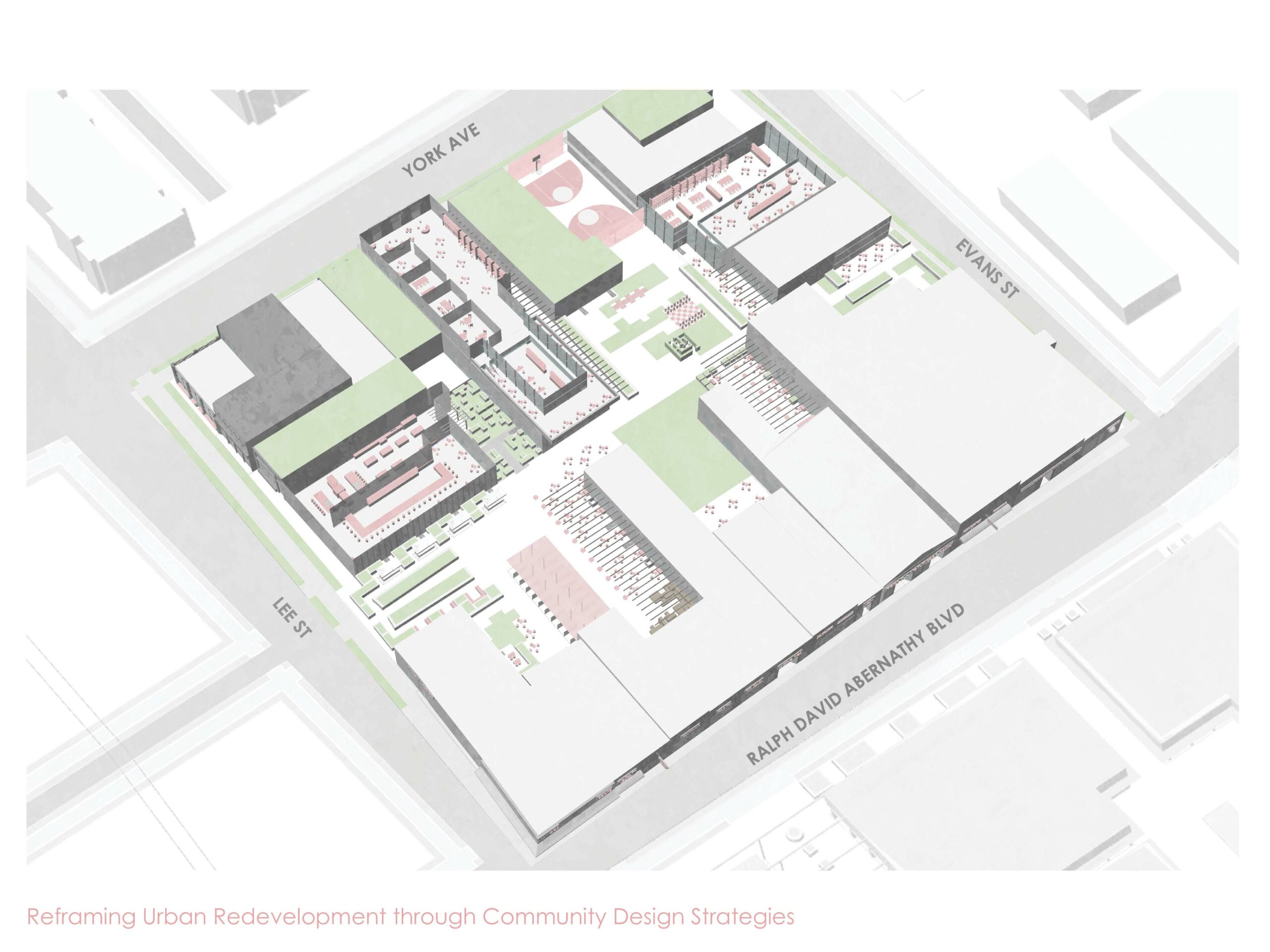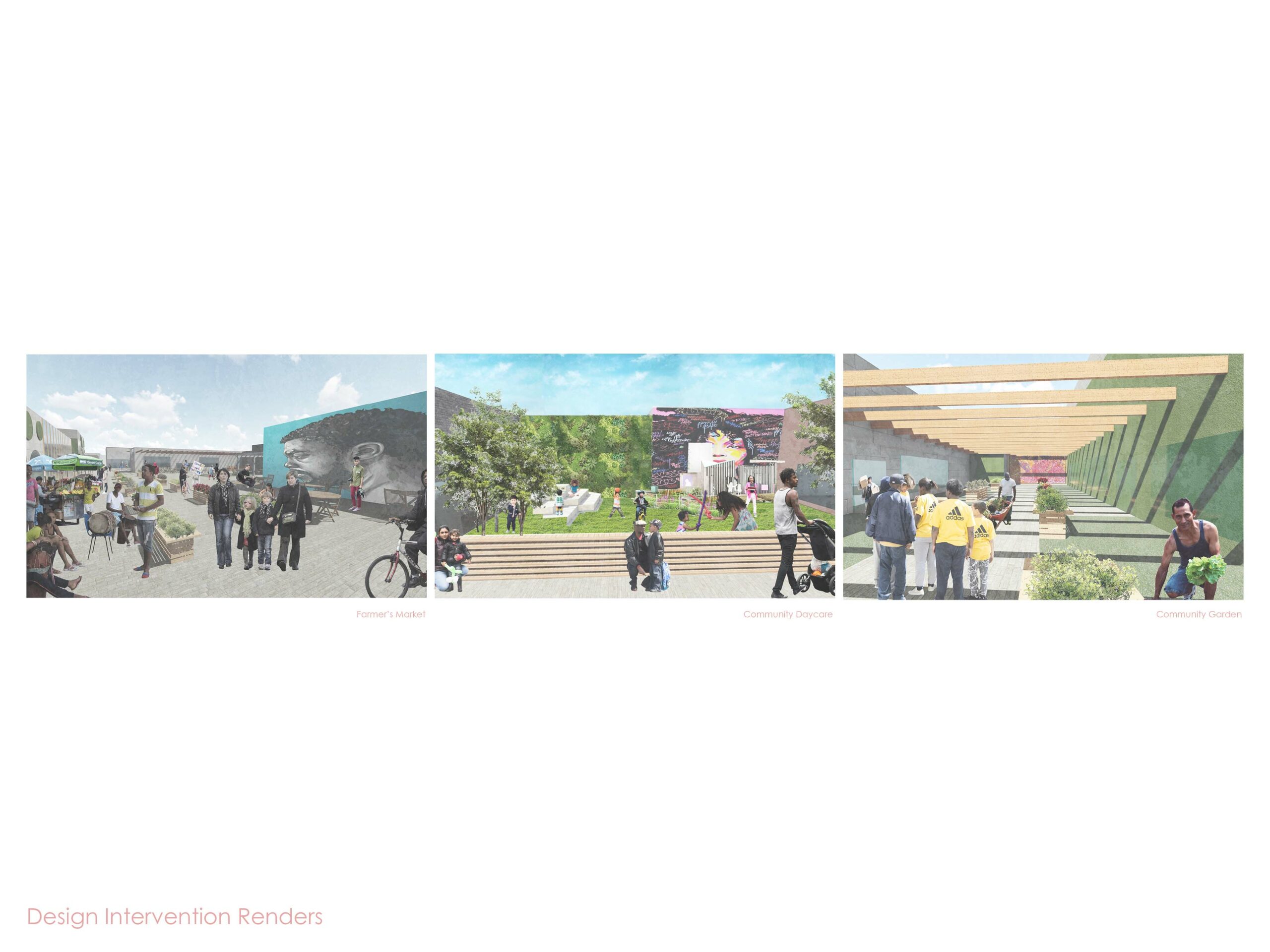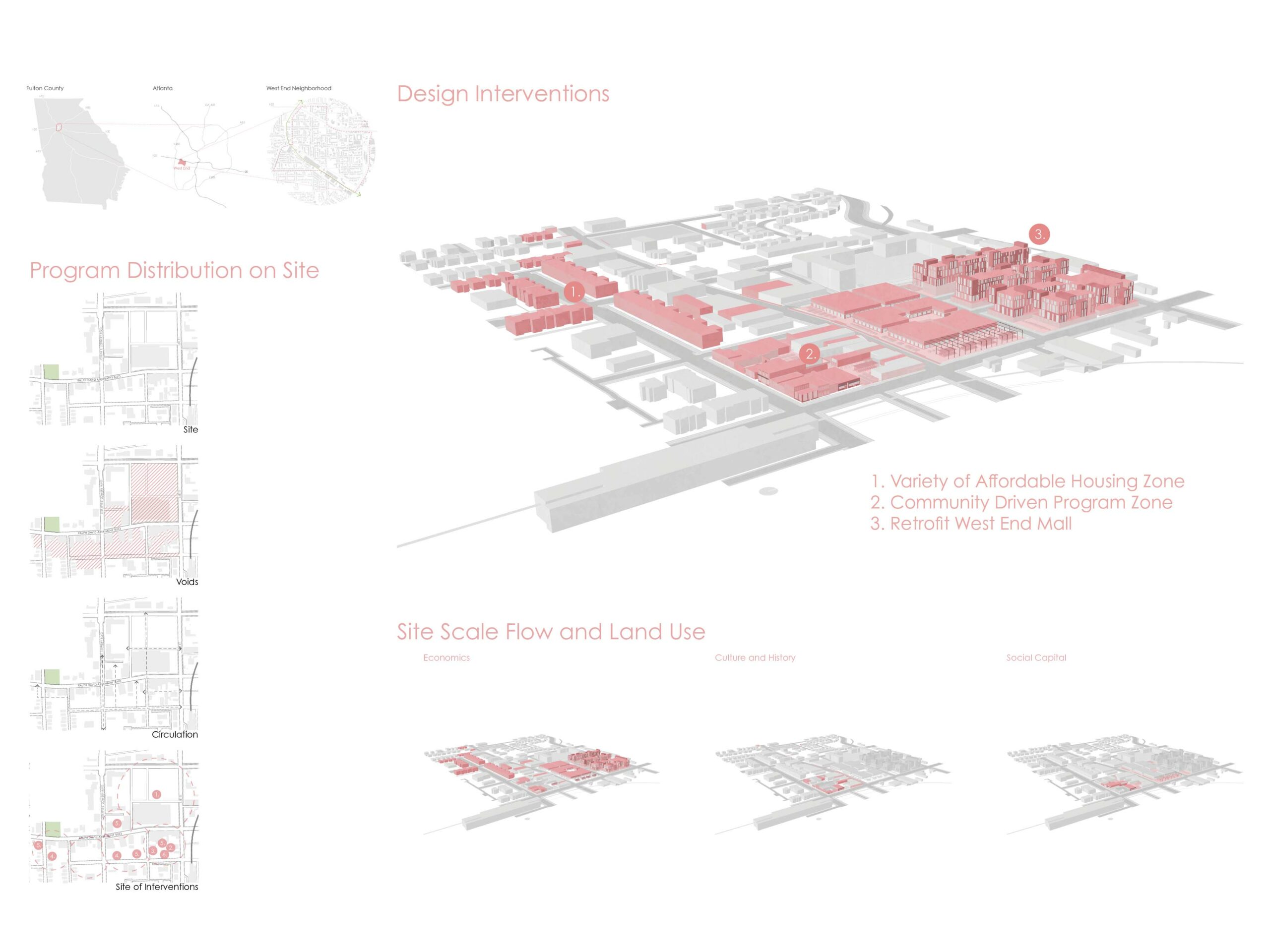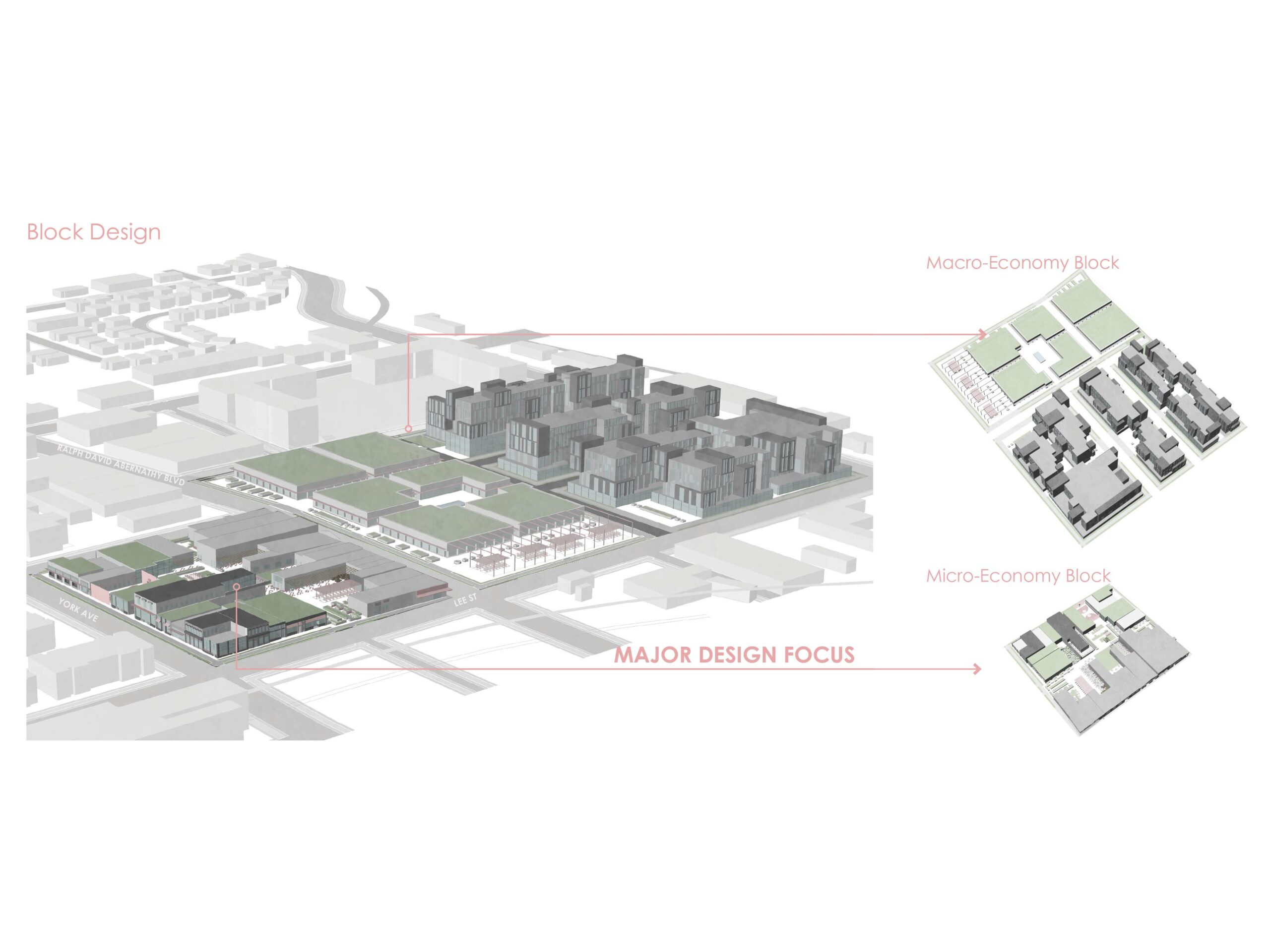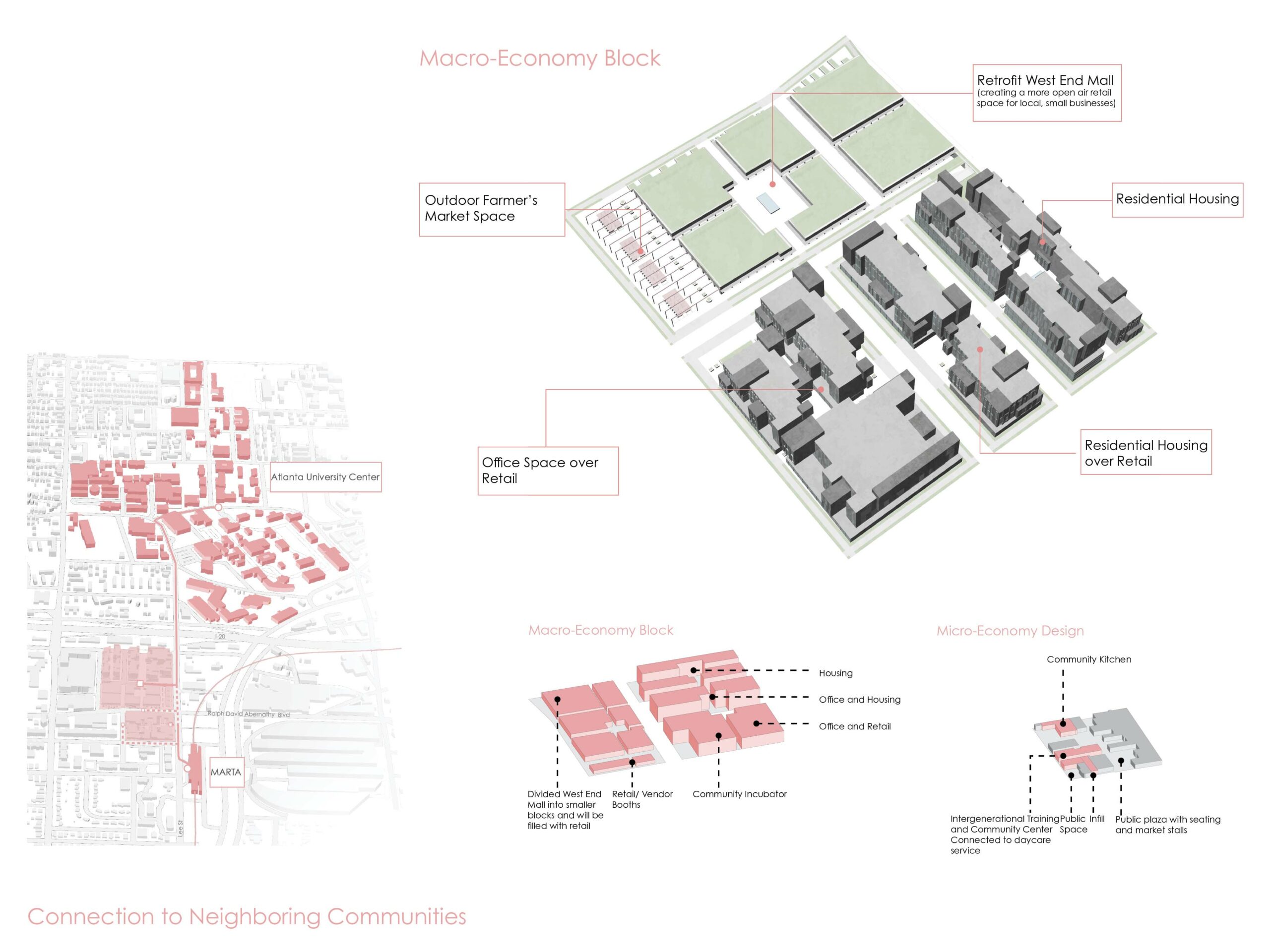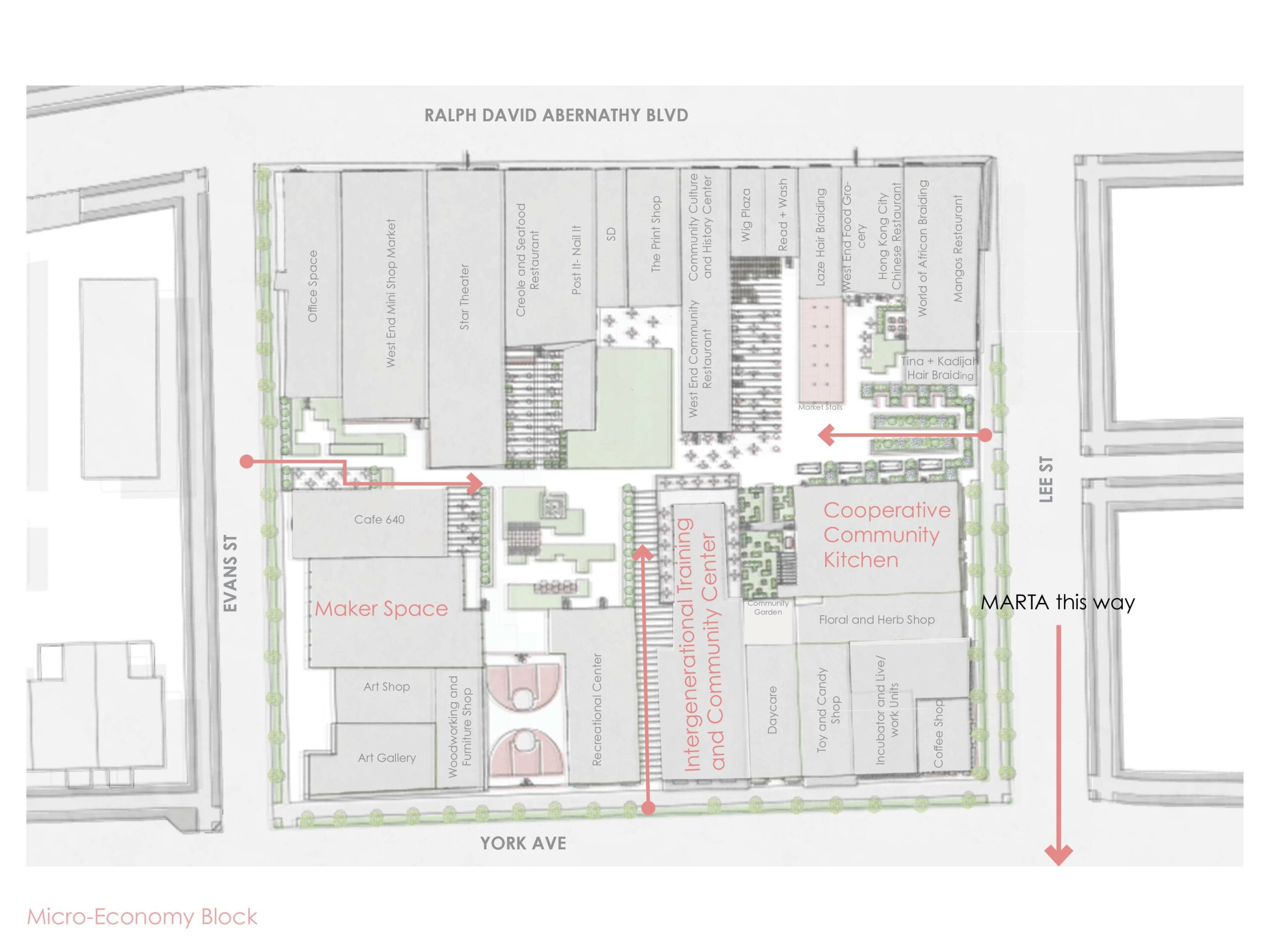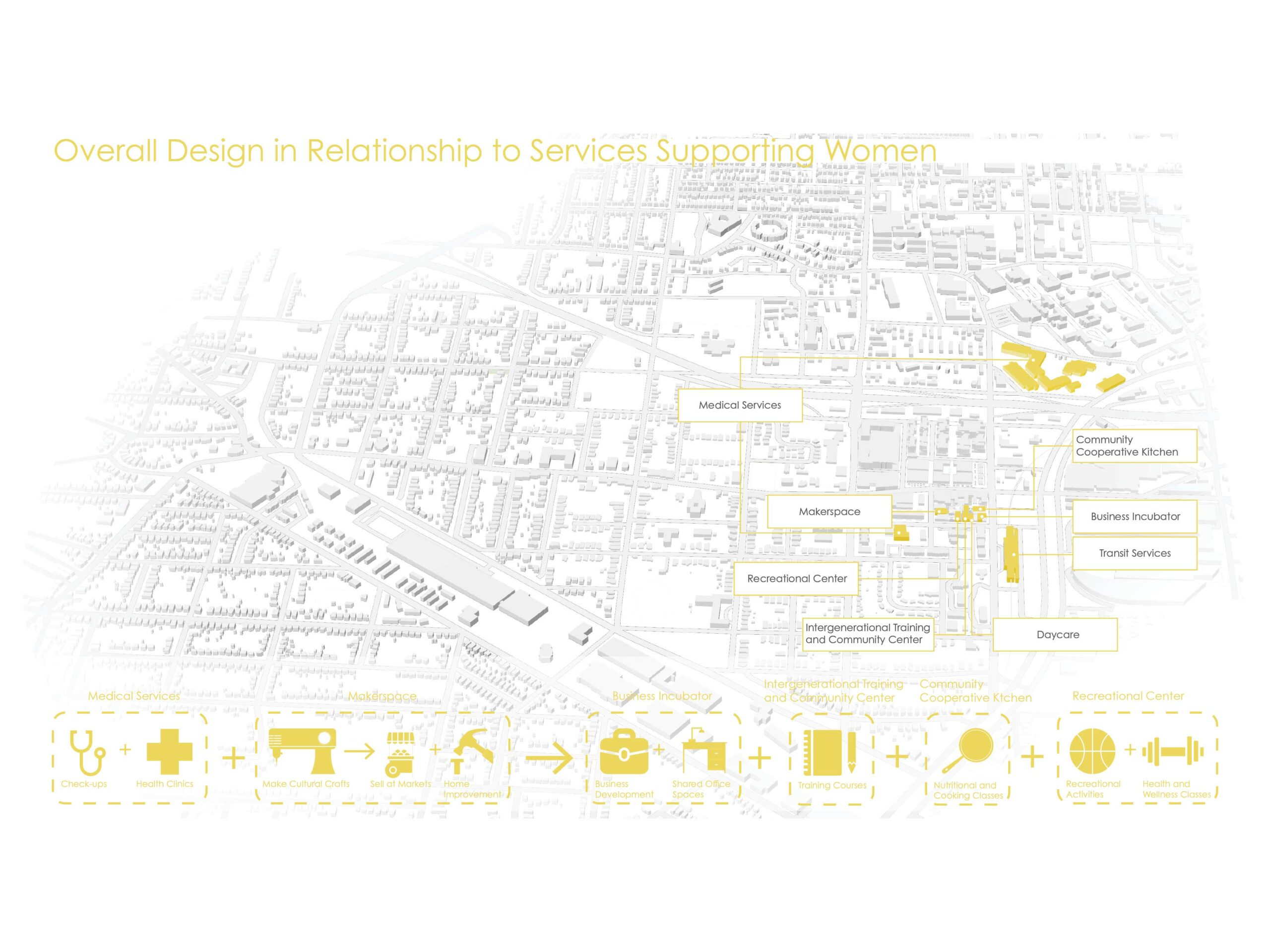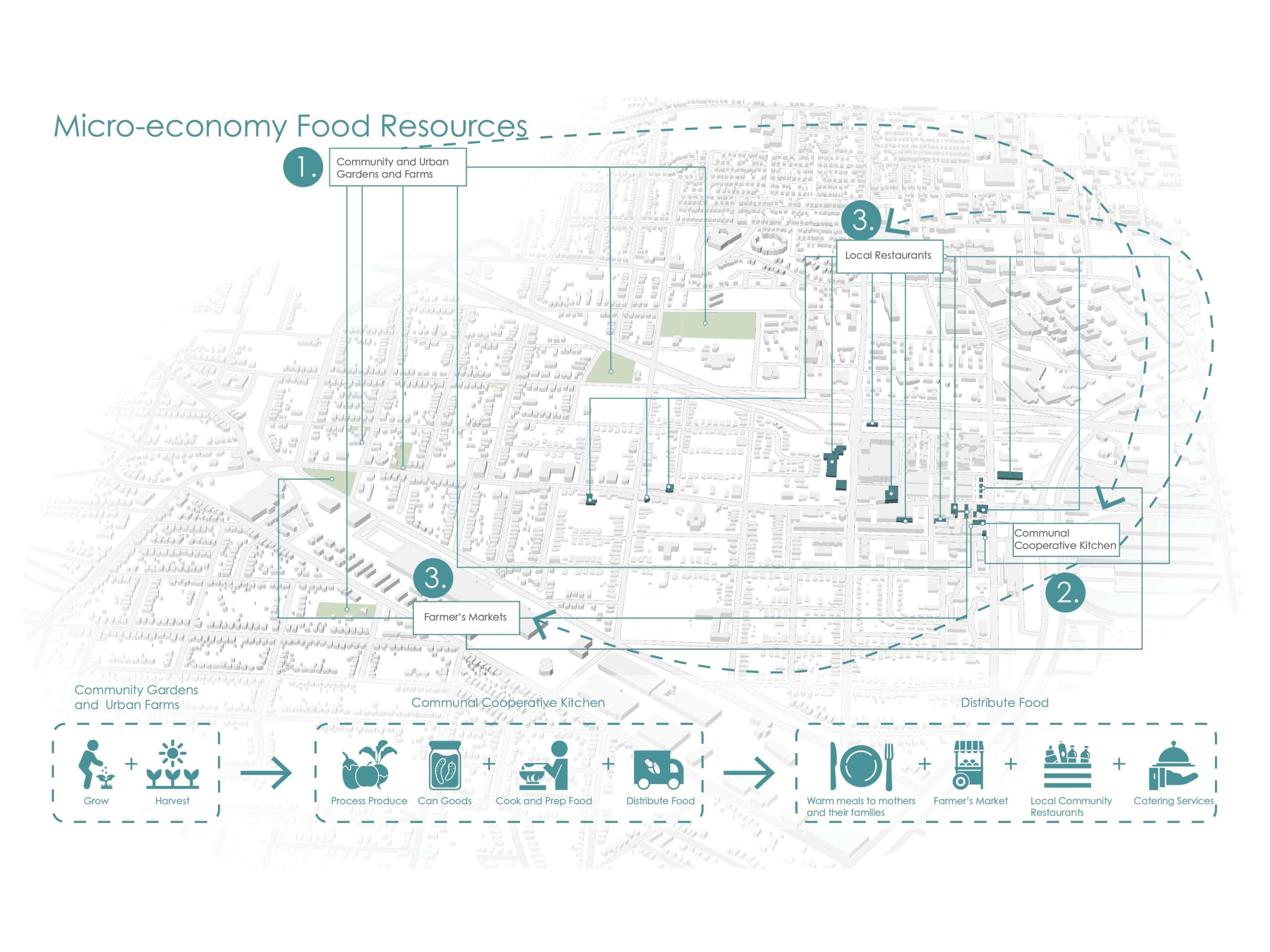1 VoteYear: 2020|Entry Categories: Student Project
Reframing Urban Redevelopment via Women Empowerment: Sustaining Existing Community in the West End Neighborhood
This thesis proposal aims to reframe redevelopment to be a system that preserves, sustains, and responds to the identity and needs of community, specifically women and children. There are ways to properly design urban environments specifically for the empowerment of women. Research focused on strategies to mitigate gentrification in urban communities through the existing neighborhood, children and food resources within the West End Community. This project is a centrally located block, at the intersection of these resources and transit where these design strategies focused on the social support structure in the neighborhood and micro-economies through African- American arts, crafts and food.
Design Challenge
Ruth Glass coined the term gentrification in 1964 to describe the influx of middle-class people displacing lower class worker residents in urban neighborhoods. Gentrification is a matter of oppression, displacement of marginalized populations, specifically women and children. As it happens, most of low-income families are headed by single or divorced women. Atlanta has handled urban redevelopment in marginalized neighborhoods that has not only resulted in gentrification, but also has disregarded the urban environments as places to sustain communities, especially women. However, through adding and enforcing policies and design interventions into these neighborhoods can help mitigate the impact gentrification has on these vulnerable populations. This thesis proposal focuses on how redevelopment of neighborhoods should help sustain the low-income residents via women empowerment while welcoming new ones. As urban redevelopment continues, is it possible to restructure it around the women’s need to support the community?
Through this framework I focused on three main interventions developed: a makerspace, cooperative communal kitchen, and intergenerational training and community center to add into the existing network of resources in the neighborhood. The design was tested on different scales and I developed these ideas to the highest fidelity of development to illustrate how through design and economic development strategies can help mitigate gentrification in the Historic West End. The intent is that these strategies can be implemented within gentrifying neighborhoods to not only empower the women but the whole community and reframe redevelopment to be a system that preserves, sustains, and responds to the identity and needs of community.Physical Context
The built environment is more than just buildings. It is understanding how people move through space and how they use space. In creating these network systems and connecting them to the existing resources within the neighborhood, allowed for a design that threaded together the existing systems to create a new network of design interventions to help theoretically and physically fill the voids within a community. The intent of these design strategies is to help mitigate the actions of gentrification and preserve the cultural integrity of community.
Share This, Choose Your Platform!

